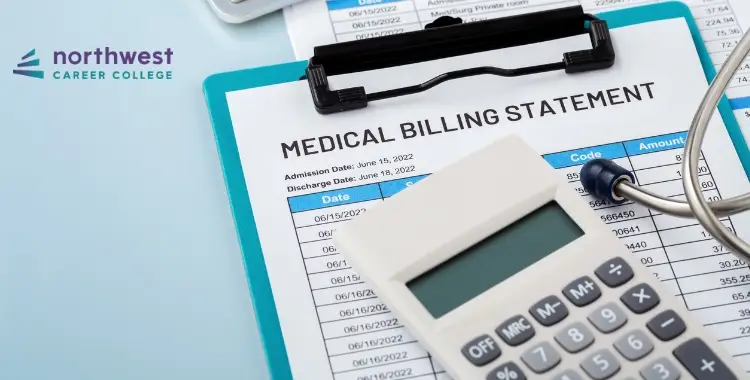5 Common Medical Billing Errors and How to Avoid Them
- Medical Billing and Coding
- March 12, 2024
- 2.9k views
- 6 min read

Table of Contents
Introduction
Medical billing services are an integral part of the healthcare system. Medical billers are crucial in managing accounts receivable, insurance billing, practice finances, and monitoring administrative processes for efficacy and reliability.
Billing accuracy is paramount, as it directly impacts the financial stability and operational efficiency of almost all healthcare facilities. Errors or inaccuracies in billing can result in underpayments or overpayments for patients or insurance companies. All of these outcomes are detrimental to the healthcare system.
Recognizing the value of medical billing services upholds the integrity of financial transactions within healthcare facilities. Given the financial challenges the federal government faces with the administration of Medicare, the need for precision in healthcare management has never been greater.
Error 1: Incorrect Patient Information
Though it might seem obvious that having correct patient information is critical to running a successful billing operation, medical facilities often need to work on strengthening this fundamental process. Inaccurate demographic details are a frequent issue within healthcare facilities. Examples include incorrect addresses, name misspellings, and incorrect dates of birth.
The medical administrative staff must collect, enter, and verify that patient information is accurate to ensure the associated medical insurance claims are not denied. Denials result in a delay in payment/reimbursement for the provider. This may also result in patients receiving invoices for services their insurance should cover.
Another common source of errors is inaccurate insurance information. Front office staff must verify insurance information is up to date at each visit to ensure that claims are directed to the proper place and with the appropriate policy number attached. Outdated insurance information will also result in denials and delays in reimbursement.
If you think this is unlikely to happen, think again. Data suggests that up to 20% of medical insurance claims are denied due to inaccurate patient information!
Error 2: Upcoding and Unbundling
Another source of medical billing errors is upcoding and unbundling. These errors can occur accidentally but are also a common source of insurance fraud.
Upcoding is when medical facilities use an inaccurate CPT code similar to the correct procedure code to get a higher reimbursement rate. For example, a physician might see a patient for a routine checkup. A medical biller might then code the procedure as an extended checkup, resulting in a significantly higher reimbursement rate.
Unbundling is a process where medical facilities use multiple procedure codes to describe a single procedure and bill for each step separately. For example, an incision and stitches can technically be billed separately if they occur at different times, but when performed simultaneously, they should be billed as one procedure. By billing them separately, however, medical billers can inappropriately seek additional reimbursement for their practice.
Upcoding and unbundling result in billions of dollars in fraudulent claims annually in the United States, negatively impacting healthcare costs and increasing insurance premiums. Insurance companies charge more to offset the losses associated with upcoding and unbundling and pay staff to investigate and prevent these actions.
Error 3: Insufficient Documentation
Sometimes, medical insurance claims are denied due to insufficient documentation to justify reimbursement for the medical procedure. This typically starts with the medical assistant or provider failing to appropriately document the chief complaint, results of testing that occurred in the office, or diagnoses associated with the encounter.
Another way in which documentation can be insufficient is when a diagnosis code is not attached to the procedure code that was submitted on the medical insurance claim or when the diagnosis code that is linked does not justify the procedure code. Proper linkage between diagnostic and procedure codes is crucial for correct coding and billing and, ultimately, for timely claims reimbursement.
Error 4: Duplicate Billing
Although significantly less common than the other types of errors, duplicate billing is a significant error related to medical billing.
This occurs when a medical facility submits multiple claims for the same procedure. This can cause reputational damage to the healthcare provider, as the insurance company associated will likely flag this as a fraudulent claim. This is not intentional in most cases but indicates insufficient administrative controls within the back office of the healthcare facility.
Medical facilities and the billers that work within them must have solid systems for documenting when a claim has been submitted to an insurance company and for checking if a claim has been submitted previously before initiating a new one.
Fortunately, as more healthcare facilities transition to electronic submission of insurance claims, the incidence of such errors should decrease.
Error 5: Inadequate Staff Training
Inadequate staff training is typically the root cause of the errors listed above. For example:
- Front office staff may be unaware of or inadequately focused on collecting correct demographic and insurance data from patients, resulting in Error 1.
- Medical billing staff may be unaware of the issues with upcoding and unbundling or may need to be more knowledgeable to identify when they are doing so inappropriately, resulting in Error 2.
- Clinical medical assistants may not be properly documenting encounter notes, or providers may not be correctly entering/linking diagnostic and procedural codes, resulting in Error 3.
- Medical billing staff may not be proficient in the electronic records or electronic billing software used by the healthcare facility, causing them to make errors with claim submission, resulting in Error 4.
Medical facilities must provide ongoing staff training and support to ensure their medical billing and other team members stay up-to-date with healthcare billing regulations. This will significantly reduce the likelihood that medical billing errors occur in the practice.
Conclusion
Medical billing professionals are crucial to the success of revenue cycle management processes for all healthcare facilities. They are responsible for observing and reporting on the accuracy and comprehensiveness of business processes that extend throughout the entire medical practice. They help ensure the financial health of the practice and help make sure that patients get the financial support they deserve from their insurance companies.
Everyone in the healthcare industry should strive to stay informed about issues with medical billing and insurance claim reimbursement so they can contribute to the continuous improvement of workflows within their facility.





